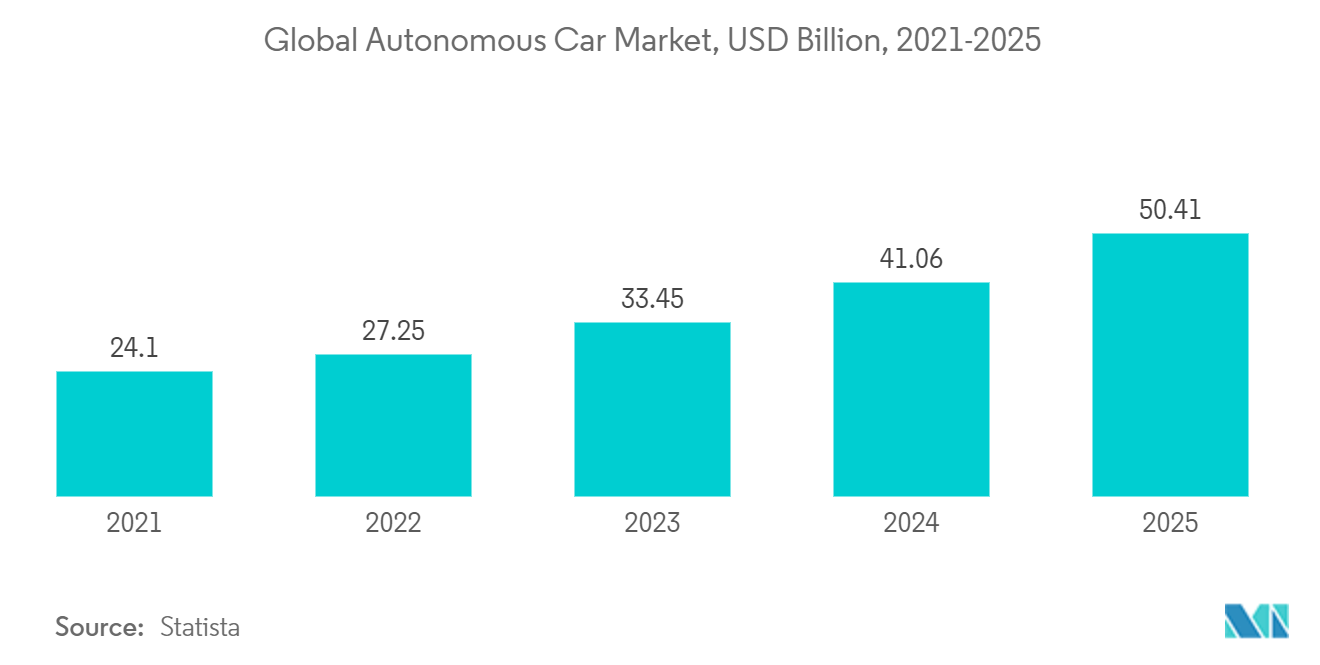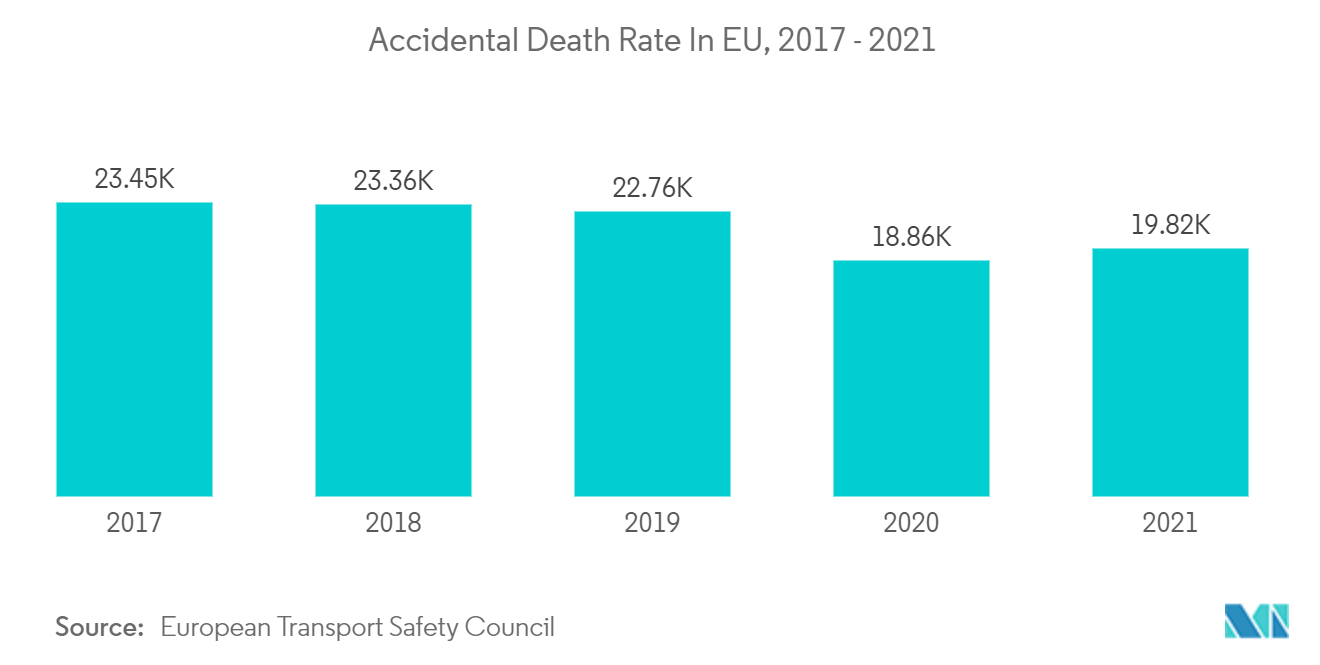Market Trends of Europe ADAS Industry
Growing Demand For ADAS Features in Vehicles
- Autonomous cars and connected vehicles are gaining consumers' interest and are anticipated to gain wider acceptance over the forecast period. The advanced driver assistance systems (ADAS) featured are expected to diminish the penetration gap between traditional cars and tomorrow's cars.
- Moreover, With the rising technological advancements in the automotive industry, end users are ready to spend more on the latest technologies, which enhance the driving experience and increase the safety of drivers and riders. ADAS features, such as collision warning, lane assistance, blind spot detection, etc., have a significant impact on consumer behavior and are expected to enhance vehicles' performance by reducing vehicle downtime by alerting the owner of any faults in the vehicle.
- These systems bring added safety and security to daily driving. Many of these systems allow the vehicle to make driving adjustments according to the condition. Functions such as steering, braking, and accelerating can be performed by the vehicle in certain situations. For instance,
- Research conducted by Canalys shows that the lane-keep assist feature, which, when activated, provides steering assistance to keep a vehicle in its lane, was installed in 56% of new cars sold in Europe in the first half of 2021.
- Apart from safety, advanced driver assistance systems can also provide other benefits, such as traffic awareness, decreased insurance premiums, low repair and maintenance costs, and increased fuel efficiency. Owing to the aforementioned factors and developments, the adoption of ADAS features is increasing in the market, and such positive trends are expected to enhance the growth of the market during the forecast period.

Growing Demand for Safer Road Transport
- The World Health Organization (WHO) says over 1.35 million people have lost their lives in road traffic crashes annually. Road safety performance is evaluated in terms of deaths and serious injuries, usually linked to driver negligence like not using a seat belt, overspeeding, and inadequate experience.
- The European countries collectively reduced the number of road deaths by 31% over the period 2011-2021, from 28,865 in 2011 to 19,823 in 2021. There were 57,095 fewer deaths on EU roads over the last decade than there would have been if deaths had continued at the same level as in 2011. This can be attributed to the strengthening of road safety and vehicle safety regulations. The decline in road death can be contributed to the government's constant efforts and the development of advanced safety features, including ADAS.
- Autonomous vehicles will be equipped with electronic stability control, alcohol interlocks for repeat offenders and fleet drivers, anti-lock braking for motorcycles and events, and journey data. Autonomous Driving will provide safety measures for both the driver and pedestrians.
- By 2025, due to the growing demand for increased regulatory norms by the European Union for safety and environmental reasons, companies will see a rise in demand for mandatory features for cars to be equipped with an autonomous driving system for all upcoming vehicles. This aim is to implement the plan on all new vehicles to reduce the road casualty rate, which is among the highest in developed countries.
- A new set of European laws went into effect in July 2022, requiring new automobiles to be fitted with a variety of required advanced driver-assist technologies to increase road safety. The new safety standards will aid in the protection of passengers, pedestrians, and bicycles throughout the European Union (EU). The new rules are part of the new Vehicle General Safety Regulations.


